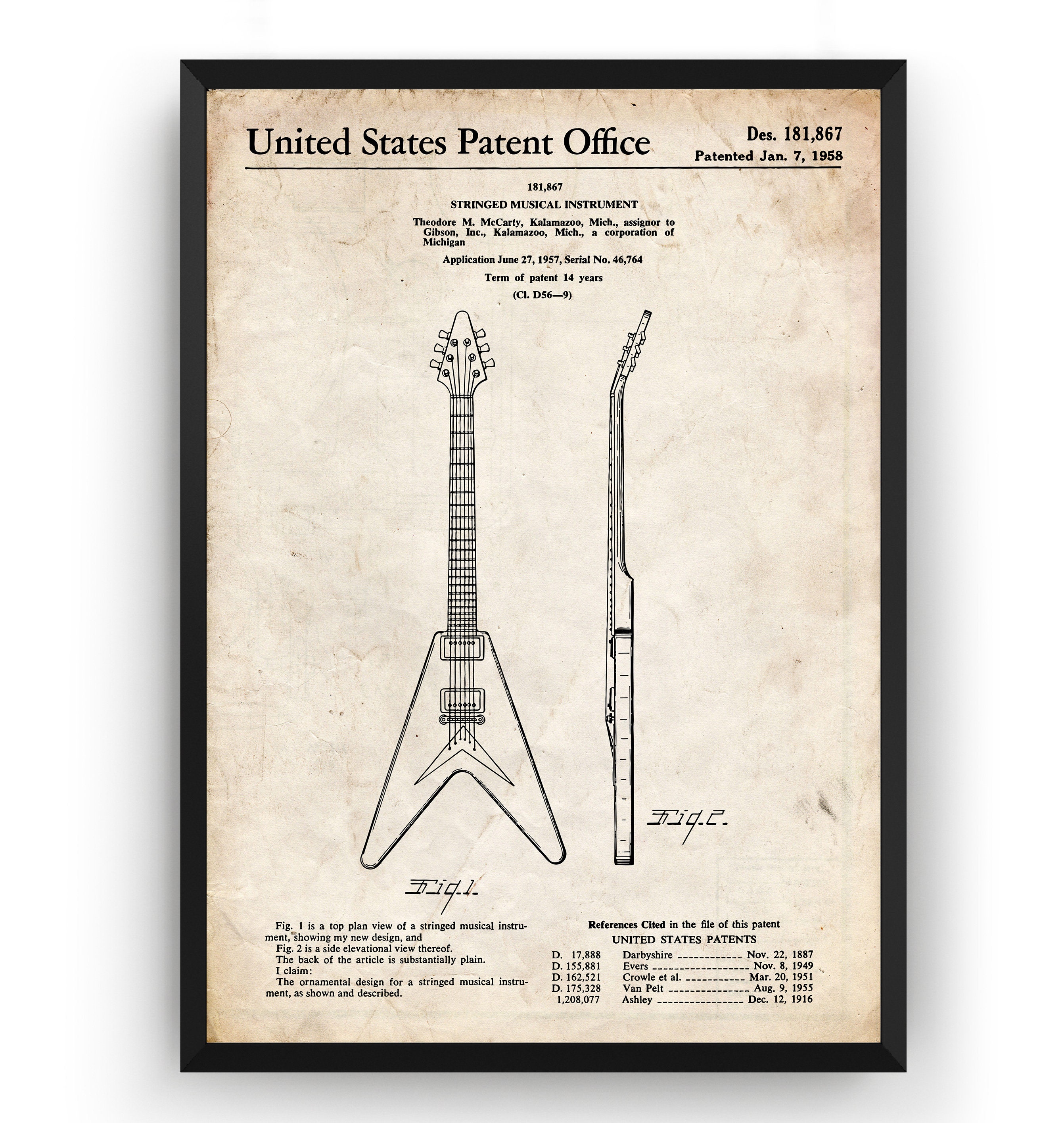

The company previewed the new model at the end of 1957 in its Gibson Gazette promo magazine, and the following March, the V appeared in a catalogue at $247.50 (about £1,700 in today’s money). Gibson boss Ted McCarty told me: “When Seth saw the first one, he laughed and said, well, that looks like a flying vee. Seth also provided the snappy model name for the first of the trio to go into production. This 1969 model sports a rare Walnut finish When the Flying V returned in the late 1960s it was designed to be easier to manufacture. Gibson called them collectively its Modernistic guitars. I sketched out a number of shapes and styles that I thought would be different for guitars, rather than going back to older designs.” Today, we know these as the Flying V, the Explorer, and the (unreleased) Moderne. “The idea behind that was to get some new shapes, and I designed this. “That’s a body style I designed for them when I was at Gibson,” Seth told me later, pointing to a picture of a Flying V. It was Seth Lover at Gibson, best known for the humbucking pickup, who drafted three new designs that might shift Gibson from an old-school approach to something more of-the-moment. Gibson had little choice but to compete further. The 1958 Flying V owned by Dave Davies was bought as a replacement for his Guild Starfire To the drawing board And it had a modern, space-agey kind of name, too. Meanwhile, Fender launched its new Stratocaster, a gleaming wonder that seemed excitingly new. Managers at the firm were rattled by Fender’s growing success, however, and in 1952 they’d reacted to the Californian threat with the Les Paul Model, something of a solidbody version of Gibson’s traditional archtop style. The Flying V had first appeared seven years earlier, in 1958, at a time when Gibson was considered a safe, successful Midwest manufacturer. Dave left the shop with a striking prize – one of the original Gibson Flying Vs that had lain neglected and unsold for several years in stores like this one. After some shifting and heaving, the dusty old case revealed its secret. Well, in fact, he struck korina.ĭave spotted an interesting brown case on a high shelf in the shop and asked to have a look. And as he rummaged in an American music store in 1965, desperate to find a replacement for his Guild Starfire lost by an airline on The Kinks’ tour route to the West Coast, he struck gold. Dave Davies knows a good thing when he sees it.


 0 kommentar(er)
0 kommentar(er)
